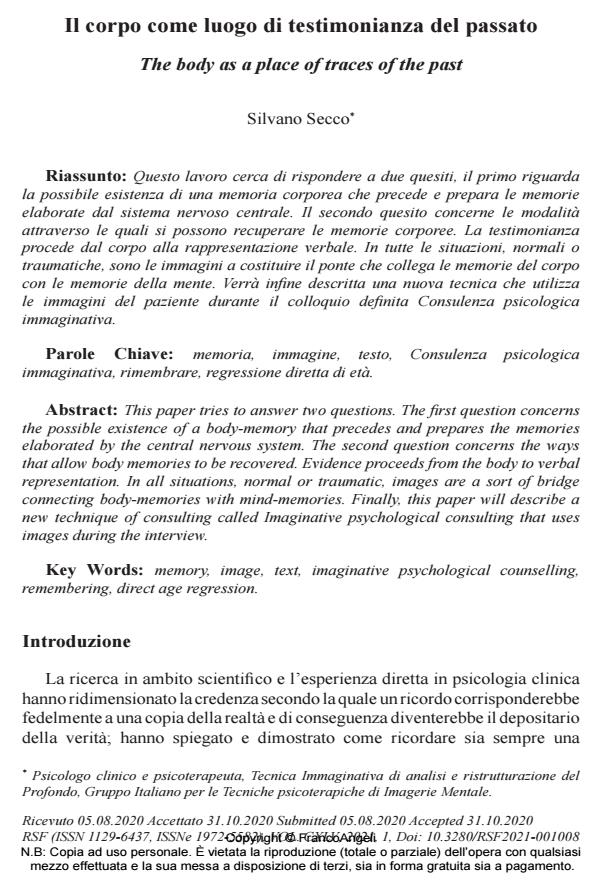The body as a place of traces of the past
Journal title RIVISTA SPERIMENTALE DI FRENIATRIA
Author/s Silvano Secco
Publishing Year 2021 Issue 2021/1
Language Italian Pages 26 P. 141-166 File size 224 KB
DOI 10.3280/RSF2021-001008
DOI is like a bar code for intellectual property: to have more infomation
click here
Below, you can see the article first page
If you want to buy this article in PDF format, you can do it, following the instructions to buy download credits

FrancoAngeli is member of Publishers International Linking Association, Inc (PILA), a not-for-profit association which run the CrossRef service enabling links to and from online scholarly content.
This paper tries to answer two questions. The first question concerns the possible existence of a body-memory that precedes and prepares the memories elaborated by the central nervous system. The second question concerns the ways that allow body memories to be recovered. Evidence proceeds from the body to verbal representation. In all situations, normal or traumatic, images are a sort of bridge connecting body-memories with mind-memories. Finally, this paper will describe a new technique of consulting called Imaginative psychological consulting that uses images during the interview.
Keywords: Memory, image, text, imaginative psychological counselling, remembering, direct age regression.
Silvano Secco, Il corpo come luogo di testimonianza del passato in "RIVISTA SPERIMENTALE DI FRENIATRIA" 1/2021, pp 141-166, DOI: 10.3280/RSF2021-001008